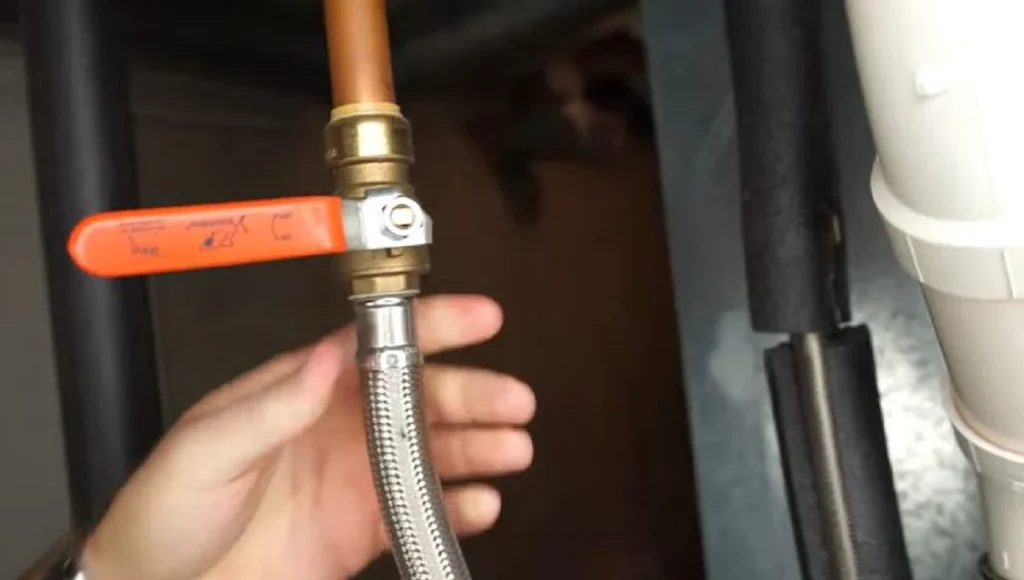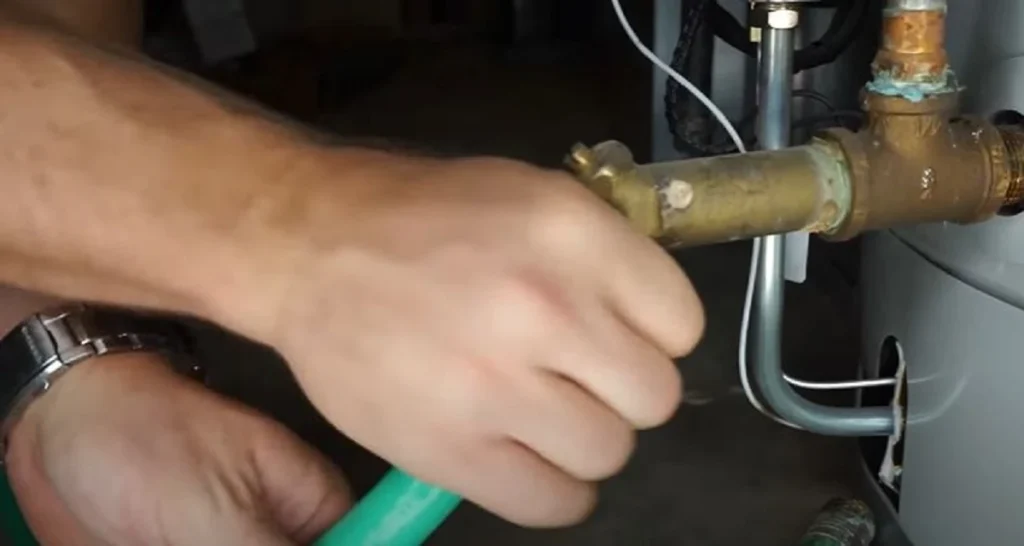| Note: This article may contain affiliate links, which means if you make a purchase following our links won’t cost you extra, but we may earn a commission. Learn more |
It is advisable to drain your water heater at least once a year. This routine maintenance is important for removing sediment and ensuring efficient operation, especially if you have hard water. In areas with hard water, even with a water softener, consider draining every six months.
Draining a hot water heater quickly involves a few straightforward steps. First, shut off the water valve supplying the tank to stop the flow of incoming water. Then, attach a hose to the drain valve at the bottom of the heater and lead it to a safe draining location, like a bucket or floor drain. Opening the pressure relief valve is vital to allow air into the tank and facilitate a smoother drain.
The duration of the drain depends on the size of your water heater, typically ranging from 20 to 60 minutes. Exercise caution while handling the drain valve to avoid damage.
Flushing your water heater, particularly after a long period like five years, is essential for removing accumulated sediment. This improves the heater’s efficiency and prolongs its lifespan.
Some manufacturers suggest draining about a gallon of water monthly, while others recommend a complete drain annually.
For individuals going on vacation, draining the water heater can help prevent issues and save energy. However, it’s not always necessary unless you plan to be away for an extended period.
The Importance of Draining Your Water Heater
Draining your water heater is an essential maintenance task that ensures the longevity and efficiency of the appliance. Over time, sediment and minerals from the water supply accumulate at the bottom of the heater. This build-up can insulate the heating element in electric heaters or create hot spots in gas heaters, leading to inefficiency and potential damage.
Regular draining helps remove this sediment, thereby improving heat transfer and reducing the energy needed to heat the water.
It prevents corrosion and extends the life of the heater. For households with hard water, this process is even more crucial due to the higher mineral content in the water.
Regular Draining Schedule and Duration
The frequency of draining your water heater largely depends on the quality of your water supply. It is recommended to drain and flush the heater once a year.
Experts generally recommend draining your water heater at least once a year to remove sediment that accumulates over time. In areas with hard water, doing this every six months may be necessary to prevent excessive sediment accumulation.
The process of draining a water heater can take anywhere from 20 to 60 minutes, depending on the size of the tank and the amount of sediment.
Before starting, ensure the power is turned off for safety, and be prepared for the water to be hot.

How to Drain a Hot Water Heater Quickly?
Draining a hot water heater quickly and efficiently requires certain tools: a standard garden hose, a flathead screwdriver (for non-hand-operated drain valves), and gloves for safety. Before starting, ensure these items are readily available.
Step 1: Turn Off the Heater
For a gas water heater, turn the thermostat to the ‘pilot’ setting. For an electric heater, switch off the power at the circuit breaker. This step is crucial for safety and to prevent damage to the heater during the draining process.
Step 2: Connect the Hose
Attach one end of your garden hose to the drain valve located at the bottom of the water heater. Ensure the connection is secure to prevent leaks. Lead the other end of the hose to a place where the water can safely drain.
Step 3: Open the Pressure Relief Valve
To ensure a smooth flow and prevent a vacuum in the system, open the pressure relief valve. This valve is typically located on the top or side of the heater. This step allows air into the tank and facilitates faster draining.
Step 4: Open the Drain Valve
Turn the drain valve counterclockwise to open it. Use a flathead screwdriver if the valve is not hand-operated. Allow the water to flow out of the tank. Initially, open the valve partially to avoid rapid water discharge that could cause splashing or harm.
Step 5: Check the Water Flow
Observe the draining process. The water should flow steadily. If the flow is slow, there might be sediment blocking the valve. In this case, briefly closing and reopening the valve can help dislodge the sediment.
Step 6: Close the Valves
Once the water heater is completely drained, close the drain valve tightly. Also, close the pressure relief valve. Ensure both are securely shut to prevent any leaks.
Step 7: Refill the Tank
Remove the hose from the drain valve. Turn on the water supply to the heater to refill the tank. Check for any leaks around the drain valve during this process.
Step 8: Restore Power
For electric heaters, turn the power back on at the circuit breaker. For gas heaters, turn the thermostat back from the ‘pilot’ setting to your desired temperature.

Flush vs. Drain
Flushing and draining a water heater are often used interchangeably, but they have distinct differences. Draining involves emptying the water heater to remove sediment that has settled at the bottom.
Flushing is a more thorough process. It involves not only draining the heater but also refilling it with water while the drain valve is open to help remove any remaining sediment.
Flushing is more effective than simply draining and is highly recommended, especially in areas with hard water.
Read Also: Solved! Buddy Heater Pilot Light Won’t Stay Lit and Other Problems
FAQs
Does Draining a Water Heater Help in Preventing Leaks?
Regular draining of your water heater can help prevent leaks. Sediment build-up can cause corrosion over time, leading to leaks. Regular draining removes this sediment, reducing the risk of corrosion and subsequent leaking.
Is It Necessary to Drain a Water Heater Even If There’s No Visible Problem?
Yes, it’s advisable to drain your water heater regularly, even if there are no apparent issues. This preventive maintenance helps remove sediment that naturally accumulates over time, improving the efficiency and lifespan of the heater.
Is Draining My Water Heater Necessary in a Soft Water Area?
Draining a water heater is beneficial even in areas with soft water. While soft water reduces sediment build-up compared to hard water, it can still contain impurities that accumulate over time. Periodic draining helps maintain the heater’s efficiency and prolongs its lifespan by removing these impurities.
Can Draining My Water Heater Lower My Energy Bills?
Yes, draining your water heater can contribute to lower energy bills. Sediment build-up at the bottom of the tank can act as an insulator, requiring more energy to heat the water. Regularly draining the tank ensures that heat is transferred more efficiently, thus reducing energy consumption.
Should I Drain My Water Heater If I Notice Discoloration in Hot Water?
If you notice discoloration in your hot water, it’s a good indication that your water heater needs to be drained. The discoloration is often due to rust or sediment build-up in the tank. Draining the tank can help remove this sediment and restore water clarity.
What Precautions Should I Take If I Have Never Drained My Water Heater?
If you have never drained your water heater, it’s important to proceed with caution. Over time, the drain valve can become clogged with sediment. Opening it suddenly could cause a blockage or leaks. It might be wise to consult a professional, especially if the heater is old, to prevent any potential damage or mishaps.
